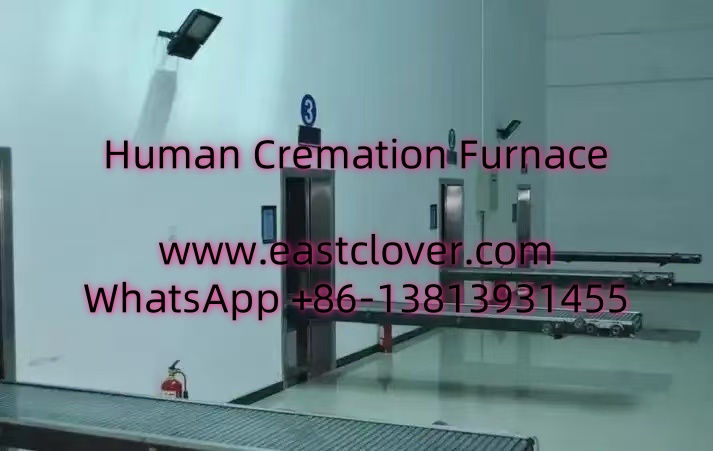Addressing Mortuary Challenges in Africa
Africa’s mortuary services face significant challenges due to rapid urbanization, population growth, and evolving public health demands. Traditional burial practices, while culturally significant, often clash with land scarcity, environmental concerns, and overcrowded cemeteries. In cities like Lagos, Nairobi, and Johannesburg, the strain on urban infrastructure has intensified the need for innovative end-of-life solutions. Mobile container cremation furnaces emerge as a transformative answer, offering portability, efficiency, and adaptability to diverse African contexts.
The Need for Innovation in Mortuary Services
Urbanization and Space Constraints
Africa’s urban population is projected to double by 2050, exacerbating land shortages. Traditional burials consume valuable land, while overcrowded cemeteries raise public health risks. Cremation offers a space-efficient alternative but requires infrastructure often lacking in many regions.
Environmental and Cultural Considerations
Burial practices can contaminate groundwater, and deforestation for coffins worsens ecological strain. Meanwhile, cultural resistance to cremation persists in areas where ancestral ties to land are strong. Mobile cremation solutions must balance sustainability with cultural sensitivity.
Cost and Accessibility
Conventional crematoriums are expensive to build and maintain, making them inaccessible for low-income communities. Mobile units reduce upfront costs and operational complexity, democratizing access to dignified end-of-life services.
Mobile Container Cremation Furnaces: A Turnkey Solution
These systems integrate cremation technology into modified shipping containers, designed for rapid deployment. Key features include:
- Portability: Easily transported by truck, ship, or rail to remote or underserved areas.
- Scalability: Modular designs allow capacity adjustments based on community needs.
- Eco-Friendly Operation: Advanced filtration systems minimize emissions, aligning with climate goals.
- Energy Efficiency: Optimized fuel consumption reduces reliance on scarce resources.
Turnkey providers handle installation, staff training, maintenance, and regulatory compliance, ensuring seamless integration into local healthcare or municipal systems.
Advantages Across African Contexts
Public Health and Disaster Response
During disease outbreaks or natural disasters, mobile units enable safe, swift management of remains, curbing infection risks. For instance, during COVID-19,南非临时部署此类设施以缓解殡仪馆压力.
Rural Accessibility
In regions like Ethiopia’s Oromia or Malawi’s villages, mobile units bypass the need for permanent infrastructure, providing cremation services for the first time.
Cost Savings
Kenyan county governments report 40% lower operational costs compared to traditional crematoriums, freeing budgets for healthcare or education.
Overcoming Challenges
Cultural Engagement
Collaborating with community leaders is critical. In Ghana, outreach programs educated communities on eco-friendly cremation, aligning it with traditional values of respect for the deceased.
Policy Alignment
Nigeria’s recent regulatory reforms streamlined permits for mobile mortuary services, demonstrating how governments can foster adoption.
Financing Models
Public-private partnerships and microloans help municipalities offset initial costs. Rwanda’s Kigali introduced a lease-to-own model for rural districts.
Future Prospects
Innovations like solar-powered cremation chambers and AI-driven emission controls are in development. As urbanization accelerates, mobile solutions will play a pivotal role in shaping Africa’s mortuary landscape, blending tradition with modernity.
www.southclover.com
Mobile container cremation furnaces address Africa’s mortuary challenges through flexibility, affordability, and environmental stewardship. By prioritizing community engagement and policy support, these systems offer a scalable path to dignified, sustainable end-of-life care across the continent.
Frequently Asked Questions
How do mobile cremation units respect cultural practices?
Providers collaborate with local leaders to incorporate rituals, such as ash-scattering ceremonies or memorial services, ensuring alignment with traditions.
What emissions controls are in place?
Advanced scrubbers and filters reduce particulate matter, meeting WHO air quality standards. Units often undergo third-party environmental audits.
Can these units operate off-grid?
Yes. Many are compatible with solar panels or generators, making them viable in areas with unstable electricity access.
How long does installation take?
Deployment typically requires 2–3 days, including site preparation and staff training.
Are governments subsidizing these systems?
Countries like South Africa and Kenya offer tax incentives or grants to municipalities adopting green mortuary technologies.

Comments are closed